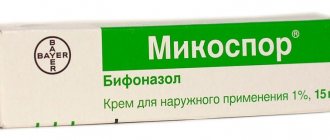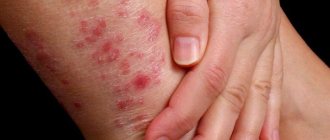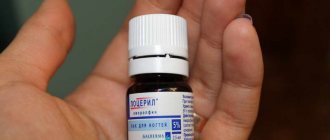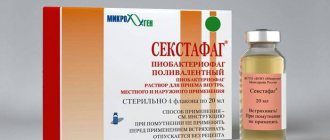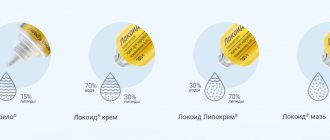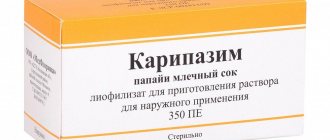Aerosol "Iodopyron"
Price for 100 ml – 270 rubles; 250 ml - 640 rub; 450 ml - 470 rub.
The aerosol is used for severe skin burns and infected purulent wounds. It is also important to use it in proctology as a means of treating the rectum before surgery, preventing suppuration and other complications in the postoperative period. Specialists in the field of obstetrics and gynecology also take advantage of the drug in preoperative preparation, for sanitation and cleansing of the birth canal and other purposes.
Aerosol - one percent brown spray in volumes of 100 ml, 250 ml and 450 ml. During one smooth press all the way, a dose (about 50 ml) of the drug comes out of the can in the form of foam. It is used to cover damaged areas of the skin.
Directions for use and doses
Before using the aerosol, the spray can must be shaken thoroughly. When you press the head of a special nozzle, 50 to 100 ml of foam containing 0.5-1 g of active substance comes out. For wound healing, it is necessary to apply an even layer in the morning and evening.
Overdose
Main symptoms: irritation at the site of application.
Therapy: symptomatic.
With prolonged use of the drug (from 7–10 days), the development of iodism may develop, which manifests itself in the form of a metallic taste in the mouth, increased salivation, swelling of the larynx or eyes, etc. In such cases, you should interrupt the use of Iodopirone and seek medical advice.
Accidental ingestion of iodine can cause damage to the mucous membrane of the gastrointestinal tract. In this case, it is necessary to rinse the stomach with a 0.5% solution of sodium thiosulfate. Mucous drink, activated carbon, flour broth, starch paste, and milk are used orally as an antidote. It is also possible to administer intravenously every 4 hours 10 ml of 10% sodium thiosulfate solution. Symptomatic treatment is indicated.
Powder and solution "Iodopyron"
Price for powder: 150 g - 2000 rubles, 150 g from the Troitsk Iodine Plant - 450 rubles, for solution: 450 ml - 700 rubles
The powder is necessary to create a solution that will later be used to disinfect the surgical field. Iodopirone is also an effective and reliable means of disinfecting the hands of a medical surgeon, his work gloves or donor elbows. Osteomyelitis in chronic form, burns, wounds that have become infected and pus - in all these and other cases, a solution is used.
Powder, from which you can later make a solution: 150-gram package - 2000 rubles. It is brownish-yellow in color and amorphous. It has no smell, or it is too weak. Easily but slowly dissolves in liquids - alcohol and water, insoluble in chloroform and ether.
1% solution (450 ml - 700 rub.) already in finished form. This is a dark brown liquid, which is characterized by film formation. Due to the main component, it has a slight specific odor. The solution is placed in glass or polymer bottles in cardboard boxes. The powder contains 6-8% active iodine and is produced in most cases in 150 gram packages. Large packages are possible for use in a hospital rather than at home - 1.5-3 kg.
Directions for use and doses
The powder is taken externally. 0.1-0.5% solutions are diluted immediately before use. For example, a solution for burns is diluted in a ratio of 1:32 and the patient is immersed in a bath.
The finished solution from the powder is used as an antiseptic in a percentage of 0.1% active iodine, and for external use - 0.1-0.5%.
Indications for use
- Powder for preparing a solution: for disinfecting donor elbows, surgeon's hands, surgical gloves and the surgical field; in the treatment of burns, purulent and infected wounds, osteomyelitis;
- Solution: externally – for the treatment of infectious and inflammatory skin lesions, injuries, wounds, myalgia; locally - for chronic tonsillitis, atrophic rhinitis, purulent otitis media, trophic and varicose ulcers, wounds, infected burns, fresh thermal and chemical burns of I-II degree; oral administration - therapy for tertiary syphilis, for the prevention and treatment of atherosclerosis.
Ointment "Iodopyron"
The ointment will help with acute suppuration of the first phase of the wound process, which is characterized by abundant flow of pus, abscesses of post-infectious origin, purulent fistulas. The main diseases for which iodopirone is indicated are mastitis, trophic ulcers, boils and phlegmons, atheromas and lipomas, curbuncles and felons, hidradenitis and bedsores. It should also be noted that the ointment has a positive effect on postoperative wounds in various medical fields, ranging from surgery and traumatology to obstetrics and dermatology.
Ointment - packaged in 100 g - from 400 rubles. It has a soft consistency with a characteristic odor of iodine.
Directions for use and doses
The ointment is applied topically, having previously treated the purulent lesion with peroxide. The wounds are filled with ointment on small gauze swabs, changing them daily until the inflammatory process stops. For prevention, the substance is applied in a thin layer, which must be isolated with sterile napkins.
Modern Pharmaceuticals of Russia
IODOPIRONE 1% aqueous solution for HOSPITAL RESIDENTS
INN:
Povidone-Iodine+[Potassium Iodide]
DESCRIPTION:
A modern pharmaceutical preparation with disinfectant, antiseptic and wound-healing properties.
Currently, only one is producing this drug in the form of a 1% solution, with an extended shelf life of 2 years, on the Russian market.
With its help, purulent wounds are successfully healed and areas of the skin are disinfected.
Doctors treat their hands with a solution of iodopyrone, both during surgical operations and during medical procedures. The spectrum of its action is extensive and this allows us to confidently call this solution a unique product!
Unfortunately, many people do not know about this drug, and those who do often have difficulty purchasing it due to its shortage on pharmacy shelves.
People from all over Russia very often contact us with a request to send the drug cash on delivery, because they cannot find it on sale at a time when people close to them are suffering. Unfortunately, we, as manufacturers, cannot solve this problem on our own.
It is for this reason that we are constantly looking for new partners who are ready to purchase even small quantities of this drug for their regions.
Why should iodopirone be in every first aid kit at home?
Yes, if only because for everyday injuries of various kinds, a faster effect of the drug is important, and, accordingly, faster relief, help and healing. APPLICATION:
When applied topically, the drug has a bactericidal, anti-inflammatory and fungicidal effect.
Iodopirone successfully fights gram-positive and gram-negative bacteria, antibiotic-resistant strains of Escherichia coli, Staphylococcus aureus and Proteus.
As practice shows, it behaves more efficiently than analogues from this pharmaceutical group.
Iodopirone cures acute purulent diseases that are in the first phase of the wound process: felons, carbuncles and boils, post-injection abscesses, lipomas, paraproctitis and suppurating atheromas.
The drug is widely used in surgery and traumatology. Heals trophic ulcers, thermal burns, bedsores.
It is used to treat 2-3 degree burns, purulent and infected wounds.
Iodopirone solution is used in proctology, obstetrics and gynecology during preoperative preparation, for the sanitation of the birth canal and the prevention of suppuration. In plastic surgery this drug is also preferred.
The drug is used for hygienic treatment of hands, post-operative and injection fields, by the general public, at home, for treating abrasions and cuts, for wiping insect bites (relieves discomfort and itching), for comprehensive skin protection from microbes in public places and in nature.
In addition, iodopyrone is widely used in veterinary medicine. PACKAGING
100 ml in orange glass bottles with a screw neck, sealed with a polyethylene threaded cap made of low-density polyethylene.
50 ml, 100 ml, 250 ml in bottles made of low-density polyethylene and a polyethylene threaded cap made of low-density polyethylene, or equipped with a plastic push-button spray pump and a protective cap made of polyethylene.
100 ml, 200 ml, 205 ml, 210 ml, 215 ml, 220 ml, 225 ml, 230 ml, 235 ml, 240 ml, 245 ml, 250 ml, 400 ml, 405 ml, 410 ml, 415 ml, 420 ml, 425 ml, 430 ml, 435 ml, 440 ml, 445 ml and 450 ml in glass bottles, sealed with rubber stoppers and aluminum caps for sealing medicines (for hospitals).
500 ml, 1000 ml in polyethylene terephthalate bottles, sealed with perforated polyethylene screw caps (for hospitals).
500 ml, 1000 ml in low-density polyethylene bottles sealed with perforated polyethylene screw caps (for hospitals).
3L and 5L in canisters made of low-density polyethylene, sealed with screw-on plastic caps with gaskets (for hospitals). Labels made of label or writing paper, or labels made of self-adhesive paper are glued onto the canisters.
Labels made of label or writing paper, or labels made of self-adhesive paper are glued onto vials and bottles.
Orange glass bottles of 100 ml, polyethylene bottles of 50 ml, 100 ml and 250 ml, glass bottles of 250 ml and 450 ml, together with an equal number of instructions for use, are placed in a pack of boxed or chrome-ersatz cardboard.
It is allowed to print the instruction text on the pack.
Glass bottles of 100 ml, 200 ml, 205 ml, 210 ml, 215 ml, 220 ml, 225 ml, 230 ml, 235 ml, 240 ml, 245 ml, 250 ml, 400 ml, 405 ml, 410 ml are allowed. 415 ml, 420 ml, 425 ml, 430 ml, 435 ml, 440 ml, 445 ml and 450 ml, together with an equal number of instructions for use, should be packaged in polyethylene shrink film or in boxes with partitions and grids made of corrugated cardboard (for hospitals) according to 4,6,8,12,25,50 bottles.
It is allowed to pack bottles of 500 ml, 1000 ml made of polyethylene terephthalate or polyethylene, together with an equal number of instructions for use, in polyethylene shrink film or in boxes with partitions and lattices made of corrugated cardboard (for hospitals) of 4,6,8,12 bottles each.
Labels made of label or writing paper, or labels made of self-adhesive paper are glued onto packaging made of polyethylene shrink film or onto boxes made of corrugated cardboard.
| Product | Individual box | Individual label | Group label | G/I size | Number of bottles per g/y | Quantity on pallet |
| Iodopirone 1%, 100 ml | — | 50×74 | 93.13x70 | 260x260x112 | 25 | 3900/156 |
| Iodopirone 1%, 200 ml | — | 50×74 | 93.13x70 | 240x180x167 | 12 | 1920/160 |
| Iodopirone 1%, 250 ml | — | 50×74 | 93.13x70 | 240x180x167 | 12 | 1920/160 |
| Iodopirone 1%, 400 ml | — | 50×74 | 93.13x70 | 243x324x172 | 12 | 864/72 |
| Iodopirone 1%, 450 ml | — | 50×74 | 93.13x70 | 324x243x172 | 12 | 864/72 |
| Iodopirone 1%, 500 ml | — | 64×89 | 93.13x70 | 215x142x194 | 6 | 1050/175 |
| Iodopirone 1%, 1000 ml | — | 70×95 | 93.13x70 | 261x174x252 | 6 | 576/96 |
BARCODES
Individual
| Iodopirone, solution for external use 1%, 100 ml | Iodopirone, solution for external use 1%, 200 ml | Iodopirone, solution for external use 1%, 250 ml | Iodopirone, solution for external use 1%, 400 ml | Iodopirone, solution for external use 1%, 450 ml | Iodopirone, solution for external use 1%, 500 ml | Iodopirone, solution for external use 1%, 1000 ml |
| 4620008620473 | 4620008620497 | 4620008620527 | 4620008620534 | 4620008620565 | 4620008620589 | 4620008620602 |
Group
| Iodopirone, solution for external use 1%, 100 ml, 25 fl | Iodopirone, solution for external use 1%, 200 ml, 12 b | Iodopirone, solution for external use 1%, 250 ml, 12 b | Iodopirone, solution for external use 1%, 400 ml, 12 b | Iodopirone, solution for external use 1%, 450 ml, 12 fl | Iodopirone, solution for external use 1%, 500 ml, 6 fl | Iodopirone, solution for external use 1%, 1000 ml, 6 fl |
| 24620008620477 | 24620008620491 | 24620008620521 | 14620008620531 | 14620008620562 | 34620008620580 | 14620008620609 |
INSTRUCTIONS for the use of the medicinal product for medical use
Registration number:
LP-002565
Trade name of the drug:
Iodopyrone
Group name:
Povidone-Iodine + [Potassium iodide]
Dosage form:
solution for external use
Compound:
1000 ml of solution contains:
Active substances:
Iodine 99.5% 14.10 g.
Excipients:
Potassium iodide 99.5% 13.80 g, low molecular weight povidone 122.10 g, purified water up to 1000 ml.
Description:
film-forming dark brown liquid, odorless or with a weak specific odor.
Pharmacotherapeutic group:
antiseptic.
ATX Code:
[D08AG]
Pharmacological properties:
Iodine in the form of polyvinylpyrrolidone iodine complex. The concentration of active iodine is not less than 1%. An antiseptic, when applied externally, has a bactericidal (against a wide range of gram-positive and gram-negative microorganisms, including antibiotic-resistant strains of Escherichia coli, Staphilococcus aureus and Proteus), antifungal effect.
Indications for use:
Disinfection of the surgeon's hands, surgical field, surgical gloves and elbow bends of donors, burns, purulent and infected wounds, osteomyelitis.
Contraindications
Hypersensitivity to the components of the drug, hyperthyroidism, Dühring's dermatitis herpetiformis, thyroid adenoma, renal failure, before radioactive iodine therapy; neonatal period (especially in premature babies).
Carefully:
Childhood, pregnancy, breastfeeding period.
Use during pregnancy and breastfeeding:
The use of the drug during pregnancy and breastfeeding is not recommended (if necessary, use is possible under individual medical supervision).
Directions for use and dosage:
Externally. 0.1-0.5% aqueous solutions are prepared from a 1% solution immediately before use. 0.1% (active iodine) solutions (5 ml) are used as an antiseptic to treat the surgeon’s hands; the surgical field is wiped with a napkin soaked in the solution. For extensive burns, the patient is immersed in a bath with a solution of 1:32 or 1:50 for 10-15 minutes. For complex treatment of purulent and infected wounds, osteomyelitis, decontamination of surgical gloves and treatment of donor elbows - 0.5% and 1% (based on active iodine) solutions of Iodopirone.
Side effect:
Dry skin, allergic reactions (itching, hyperemia at application sites, urticaria). When applied to a large wound surface, a quickly passing burning sensation is possible.
Overdose:
Symptoms of overdose: irritation at the site of application.
Treatment: symptomatic.
Long-term use (more than 7-10 days) can cause the phenomenon of iodism (“metallic” taste in the mouth, increased salivation, swelling of the eyes or larynx, etc.), if this occurs, you should stop using the drug and consult a doctor.
Accidental ingestion of iodine may damage the mucous membrane of the gastrointestinal tract (GIT). The stomach should be rinsed with a 0.5% sodium thiosulfate solution; activated charcoal, starch paste, flour broth, mucous drink, milk and/or 10 ml of a 10% sodium thiosulfate solution are used orally every 4 hours as an antidote, as well as symptomatic therapy.
Interaction with other drugs:
Pharmaceutically incompatible with disinfectants containing mercury, oxidizing agents, alkali salts and acidic substances, with drugs for external use containing enzymes (iodine reduces enzyme activity). In the presence of blood, the bactericidal effect may be reduced. When used simultaneously with lithium preparations, a synergistic hypothyroid effect is possible.
Special instructions:
Avoid getting the solution into your eyes.
Do not heat before use.
Do not use for bites from insects, domestic or wild animals.
During use, indicator papers to detect occult bleeding in stool and urine may show false-positive results due to the strong oxidative effect of povidone-iodine.
Coloring on leather and fabrics is easily washed off with water.
Impact on the ability to drive vehicles and operate machinery:
The use of the drug does not affect driving or engaging in other potentially hazardous activities that require increased concentration and speed of psychomotor reactions.
Release form:
Solution for external use 1%.
100 ml in orange glass bottles with a screw neck, sealed with a polyethylene threaded cap made of low-density polyethylene.
50 ml, 100 ml, 250 ml in bottles made of low-density polyethylene and a polyethylene threaded cap made of low-density polyethylene, or equipped with a plastic push-button spray pump and a protective cap made of polyethylene.
100 ml, 200 ml, 205 ml, 210 ml, 215 ml, 220 ml, 225 ml, 230 ml, 235 ml, 240 ml, 245 ml, 250 ml, 400 ml, 405 ml, 410 ml, 415 ml, 420 ml, 425 ml, 430 ml, 435 ml, 440 ml, 445 ml and 450 ml in glass bottles, sealed with rubber stoppers and aluminum caps for sealing medicines (for hospitals).
500 ml, 1000 ml in polyethylene terephthalate bottles, sealed with perforated polyethylene screw caps (for hospitals).
500 ml, 1000 ml in bottles made of low-density polyethylene, sealed with polyethylene screw caps with perforations (for hospitals).
3 l and 5 l in canisters made of low-density polyethylene, sealed with screw-on plastic caps with gaskets (for hospitals).
Labels made of label or writing paper or labels made of self-adhesive paper are glued onto the canisters.
Labels made of label or writing paper or labels made of self-adhesive paper are glued onto vials and bottles.
Orange glass bottles of 100 ml, polyethylene bottles of 50 ml, 100 ml and 250 ml, glass bottles of 250 ml and 450 ml, together with instructions for use, are placed in a pack of boxed or chrome-ersatz cardboard.
It is allowed to print instructions for use on the pack.
Glass bottles of 100 ml, 200 ml, 205 ml, 210 ml, 215 ml, 220 ml, 225 ml, 230 ml, 235 ml, 240 ml, 245 ml, 250 ml, 400 ml, 405 ml, 410 ml are allowed. 415 ml, 420 ml, 425 ml, 430 ml, 435 ml, 440 ml, 445 ml and 450 ml, together with an equal number of instructions for use, should be packaged in polyethylene shrink film or in boxes with partitions and grids made of corrugated cardboard (for hospitals) according to 4, 6, 8, 12, 25, 50 bottles.
Bottles of 500 ml are allowed. 1000 ml of polyethylene terephthalate or polyethylene, together with an equal number of instructions for use, should be packaged in polyethylene shrink film or in boxes with partitions and grids made of corrugated cardboard (for hospitals) of 4, 6, 8, 12 bottles.
Labels made of label or writing paper or labels made of self-adhesive paper are glued onto packaging made of polyethylene shrink film or onto boxes made of corrugated cardboard.
Storage conditions:
In a place protected from light at a temperature not exceeding 25 ºС. Keep out of the reach of children.
Best before date:
2 years. Do not use after the expiration date stated on the packaging.
Conditions for dispensing from pharmacies:
Dispensed without a prescription.
Contraindications and precautions
The main contraindication for all forms of release is hypersensitivity to the main active ingredient. If this is not available, you can safely start using an ointment or solution, the main thing is that the medicine does not get on the mucous membranes. In such a case, it is necessary to immediately wash off iodopirone under a strong stream of water.
During pregnancy and breastfeeding
With caution and exclusively under medical supervision, it is possible to treat pregnant and nursing mothers, as well as use in the pediatric field.
special instructions
It is necessary to avoid contact of Iodopirone with the eyes.
The solution should not be heated before use.
Iodopirone solution for external use is not used to treat insect bites, as well as domestic and wild animals.
Tracer papers used to detect occult blood in stool and urine may give a false-positive result due to the strong oxidative effect of povidone-iodine.
Dyed areas of skin and fabric can be easily washed with water.
Impact on the ability to drive vehicles and complex mechanisms
The use of Iodopirone does not affect the concentration of attention and the speed of psychomotor reactions.
Analogs
Iodinol
Tula pharmaceutical factory, Russia Price: 100 ml solution – 86 rub.
Iodinol is a mixture of iodine with polyvinylpyrrolidone, belongs to the group of antiseptics
Pros:
- Dissolves in water
- Not toxic
- Stable in storage
- It is practically odorless and does not cause allergies.
Minuses:
- Possible burning sensation
- Low, but still likely to have side effects.
Iodine
Voronezhkhimpharm, Russia; Kirov Pharmaceutical Factory, Russia and others Price: 100 ml solution – 48 rubles.
Iodine is a chemical element with persistent antimicrobial properties. The drug has a local irritant effect on tissues, and in higher concentrations provides a cauterizing effect.
Pros:
- Highly effective in the treatment of skin diseases, for healing wounds and cuts
- Excellent disinfection properties
- Affordable price
Minuses:
- Possibility of an allergic reaction
- Skin burns due to improper use.
Side effects
The use of powder to prepare a solution for external use can cause side effects such as dry skin, itching, the development of allergic reactions (urticaria, hyperemia), and possibly a temporary burning sensation when large wound surfaces are wetted.
Side effects of using the solution may include:
- External use: rarely – skin irritation; when applied to large wound surfaces for a long time - iodism (urticaria, rhinitis, Quincke's edema, acne, increased salivation and lacrimation);
- Oral intake: tachycardia, sleep disturbances, allergic skin reactions, nervousness, increased sweating, diarrhea in patients over 40 years of age.
Advantages and release form
In comparison with numerous new generation antiseptics, Iodopyron remains a much more effective remedy than them.
The combination of potassium iodide with povidone-iodine is no less active against microorganisms, but causes less irritation than free iodine. That is why “Iodopyron” is so often used to treat wounds and treat infectious and inflammatory processes. It is recommended to treat mucous membranes and skin with the solution. It is difficult for many microorganisms to adapt to the action of iodine, so they die upon contact with the substance. For this reason, Yoopiron is recognized as the best antiseptic for infections with many antibiotic-resistant infections, including E. coli and staphylococcus.
Previously, production was carried out only in medical institutions or pharmacies. Now the finished drug is available in several forms:
- aerosol;
- powder;
- ointment.
You can buy the product in any form. It is most convenient to use an aerosol product at home. Powder is the oldest form of release. A solution is prepared on its basis. The ointment appeared on sale relatively recently.
Local antiseptic is used in traumatology, gynecology, surgery, proctology, and in everyday life. Active anti-inflammatory, fungicidal and antibacterial action ensures the use of:
- in the treatment of panaritium boils and carbuncles;
- to accelerate the healing of purulent and infected wounds, bedsores and trophic ulcers;
- in the treatment of inflammatory diseases, myalgia and varicose veins;
- in the treatment of burns, osteomyelitis, mastitis and phlegmon;
- for preoperative treatment of the surgeon's hands and gloves, the patient's skin, for sanitation of the birth canal;
- for the prevention of post-injection abscess;
- for disinfection of the elbow bend of donors;
- during plastic surgery;
- in everyday life for protection against germs, treatment of scratches, wounds and insect bites.

